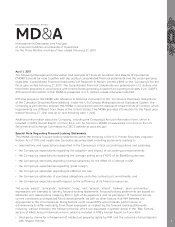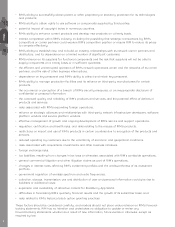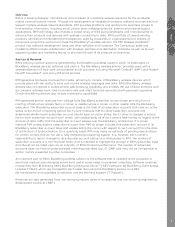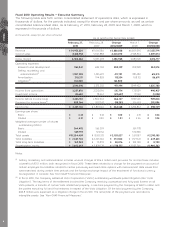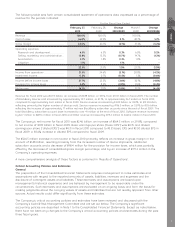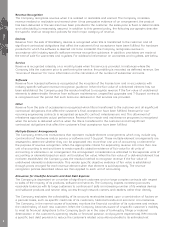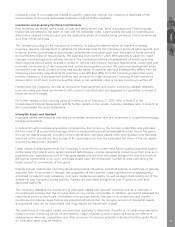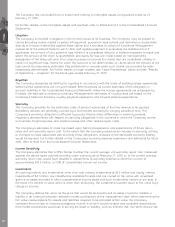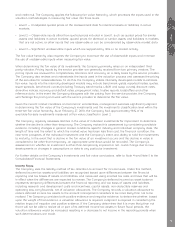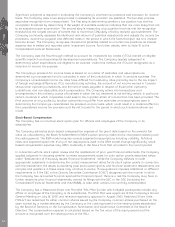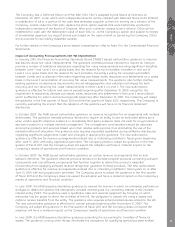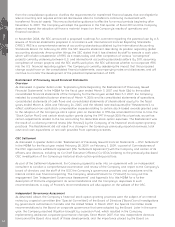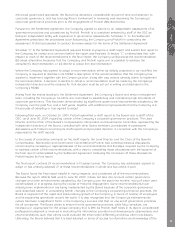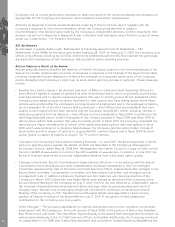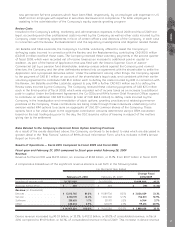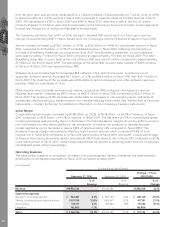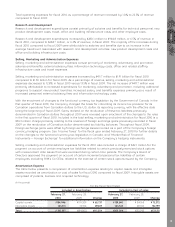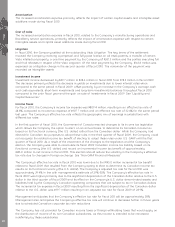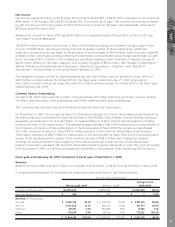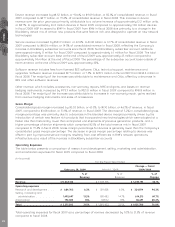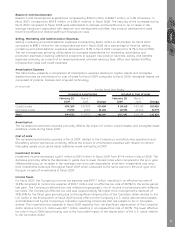Blackberry 2010 Annual Report Download - page 21
Download and view the complete annual report
Please find page 21 of the 2010 Blackberry annual report below. You can navigate through the pages in the report by either clicking on the pages listed below, or by using the keyword search tool below to find specific information within the annual report.
The Company has a Deferred Share Unit Plan (the “DSU Plan”), adopted by the Board of Directors on
December 20, 2007, under which each independent director will be credited with Deferred Share Units (“DSUs”)
in satisfaction of all or a portion of the cash fees otherwise payable to them for serving as a director of the
Company. Grants under the DSU plan replace the stock option awards that were historically granted to
independent members of the Board of Directors. After such a director ceases to be a director, DSUs will be
redeemed for cash with the redemption value of each DSU or, at the Company’s option and subject to receipt
of shareholder approval, by way of shares purchased on the open market or issued by the Company. DSUs
are accounted for as liability-classified awards.
For further details on the Company’s stock-based compensation, refer to Note 11 to the Consolidated Financial
Statements.
Impact of Accounting Pronouncements Not Yet Implemented
In January 2010, the Financial Accounting Standards Board (“FASB”) issued authoritative guidance to improve
disclosures about fair value measurements. The guidance amends previous literature to require an entity to
provide a number of additional disclosures regarding fair value measurements including significant transfers
between Level 1 and Level 2 on a gross basis and the reasons for such transfers, transfers in and out of
Level 3 on a gross basis and the reasons for such transfers, the entity’s policy for recognizing transfers
between Levels and to disclose information regarding purchases, sales, issuances and settlements on a gross
basis in the Level 3 reconciliation of recurring fair value measurements. The guidance also further clarifies
existing guidance on disclosure requirements around disaggregation and valuation techniques for both
recurring and non-recurring fair value measurements in either Level 2 or Level 3. The new authoritative
guidance is effective for interim and annual periods beginning after December 15, 2009, except for the
requirement to separately disclose purchases, sales, issuances and settlements in the Level 3 reconciliation,
which is effective for interim and annual periods beginning after December 15, 2010. The Company will adopt
the guidance in the first quarter of fiscal 2011 and the first quarter of fiscal 2012, respectively. The Company is
currently evaluating the impact that the adoption of this guidance will have on its financial statement
disclosures.
In October 2009, the FASB issued authoritative guidance on revenue recognition for arrangements with multiple
deliverables. The guidance amends previous literature to require an entity to use an estimated selling price
when vendor specific objective evidence or acceptable third party evidence does not exist for any products or
services included in a multiple element arrangement. The arrangement consideration should be allocated
among the products and services based upon their relative selling prices, thus eliminating the use of the
residual method of allocation. The guidance also requires expanded qualitative and quantitative disclosures
regarding significant judgements made and changes in applying the guidance. The new authoritative
guidance is effective for revenue arrangements entered into or materially modified in fiscal years beginning
after June 15, 2010, with early application permitted. The Company plans to adopt the guidance in the first
quarter of fiscal 2011 and the Company does not expect the adoption will have a material impact on the
Company’s results of operations and financial condition.
In October 2009, the FASB issued authoritative guidance on certain revenue arrangements that include
software elements. The guidance amends previous literature to exclude tangible products containing software
components and non-software components that function together to deliver the product’s essential
functionality from applying software revenue recognition guidance to those products. The new authoritative
guidance is effective for revenue arrangements entered into or materially modified in fiscal years on or after
June 15, 2010 with early application permitted. The Company plans to adopt the guidance in the first quarter
of fiscal 2011 and the Company’s does not expect the adoption will have a material impact on the Company’s
results of operations and financial condition.
In June 2009, the FASB issued authoritative guidance to amend the manner in which an enterprise performs an
analysis to determine whether the enterprise’s variable interest gives it a controlling interest in the variable
interest entity (“VIE”). The guidance uses a qualitative risks and rewards approach by focusing on which
enterprise has the power to direct the activities of the VIE, the obligation to absorb the entity’s losses and
rights to receive benefits from the entity. The guidance also requires enhanced disclosures related to the VIE.
The new authoritative guidance is effective for annual periods beginning after November 15, 2009. The
Company will adopt the guidance in the first quarter of fiscal 2011 and the Company does not expect the
adoption will have a material impact on the Company’s results of operations and financial condition.
In June 2009, the FASB issued authoritative guidance amending the accounting for transfers of financial
assets. The guidance, among other things, eliminates the exceptions for qualifying special-purpose entities
MD&A
13


